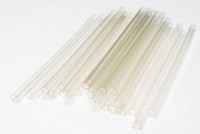Advertisement
Grab your lab coat. Let's get started
Welcome!
Welcome!
Create an account below to get 6 C&EN articles per month, receive newsletters and more - all free.
It seems this is your first time logging in online. Please enter the following information to continue.
As an ACS member you automatically get access to this site. All we need is few more details to create your reading experience.
Not you? Sign in with a different account.
Not you? Sign in with a different account.
ERROR 1
ERROR 1
ERROR 2
ERROR 2
ERROR 2
ERROR 2
ERROR 2
Password and Confirm password must match.
If you have an ACS member number, please enter it here so we can link this account to your membership. (optional)
ERROR 2
ACS values your privacy. By submitting your information, you are gaining access to C&EN and subscribing to our weekly newsletter. We use the information you provide to make your reading experience better, and we will never sell your data to third party members.
Materials
Olefin Dispersions
Low-viscosity waterborne dispersions enable thin, solvent-free films
by Marc S. Reisch
December 4, 2006
| A version of this story appeared in
Volume 84, Issue 49
Dow Chemical has developed the first generation of what it promises will be a series of water-based polyolefin dispersions with an environmentally friendly profile. The advance makes possible the formation of thin, low-cost films for a variety of applications, including paper, packaging, and textiles.
Dow's performance plastics unit has market development quantities available to customers that want to sample the propylene- and ethylene-based resin dispersions. By the middle of next year, Dow plans to have commercial quantities available to customers in the U.S. and Europe. Dow managers decline to predict the market potential for the new dispersions, but some sources suggest it could approach $100 million annually over the next five years.
Bob Ranger, Dow Performance Plastics business development manager, says the new dispersions bring well-known polyolefin performance properties, such as water and chemical resistance, and application benefits, such as heat sealability, into a waterborne system. Although extruders are now able to form a 12-µm-thick polypropylene film, the new dispersion system yields a 4-µm film with good adhesion properties, the company claims.
Users will also be able to dip, spray, and foam these new dispersions. With conventional polyolefins, users can employ only traditional thermoplastic-forming processes such as extrusion, injection molding, and blow molding. The water-based system also makes it possible to add inorganic fillers to the dispersions and to design them to adhere to both polar and nonpolar substrates.
To make the new dispersions, explains Brad Moncla, technology development manager, Dow starts with polyolefins made through traditional catalytic polymerization. The company then puts the polymer through a high-shear mechanical process that breaks it up into submicrometer particles.
By combining the polymer and a surfactant, Dow can make an aqueous dispersion that "looks like milk" and boasts a solids content as high as 60%, Moncla says. "Polyolefins don't like water," he says, but the surfactant keeps the dispersions stable for six months. When a dispersion is applied to a substrate such as paper or textiles and then heated, the water evaporates and the polyolefin melts to form a final coating.
By choosing the right polymer and surfactant, Moncla says, Dow can tailor-make dispersion systems appropriate to customers' needs. For instance, polyolefin dispersions can substitute for the traditional styrene-butadiene latex used to hold needle-punched carpet together. Carpet makers could combine polypropylene latex with polypropylene fiber and backing to create a carpet that can be recycled whole instead of being separated into components, as must be done today (C&EN, Oct. 23, page 33).
Even though Dow is a big producer of styrene-butadiene latex, Ranger says he is not worried about the potential loss of business. Sales of other materials such as vinyl acetate ethylene emulsions and urethane will be under greater pressure from "green" carpet systems, he says.
The new dispersions could also displace fluorochemicals now used to coat hamburger wrappers and other paper fast-food packaging, Moncla says. Although fluorochemicals provide excellent grease and stain resistance, their manufacture can involve the use of perfluorooctanoic acid, a substance suspected of causing health problems. Manufacturers looking for an alternative could turn to the Dow dispersions.
As Dow rolls out its new polyolefin dispersions over the next few years, "we'll be delivering polyolefin properties in an entirely new way," Ranger says.




Join the conversation
Contact the reporter
Submit a Letter to the Editor for publication
Engage with us on Twitter